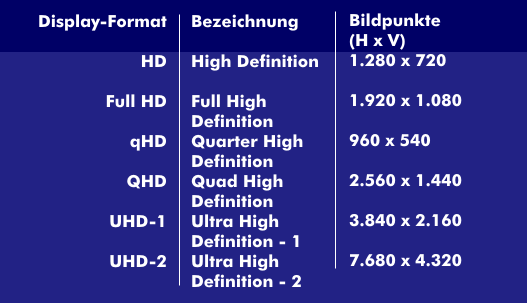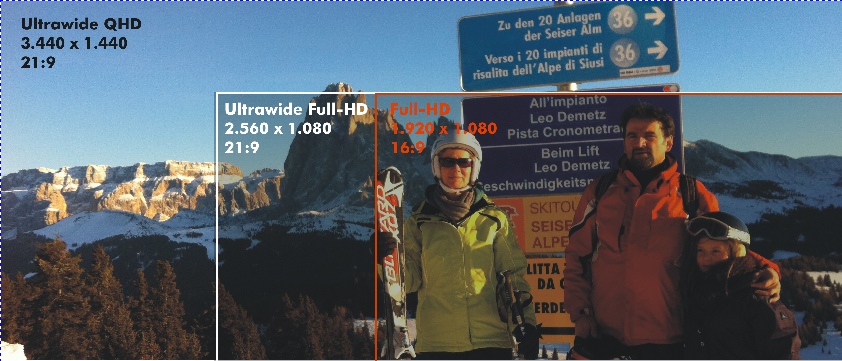full HD (FHD)
EICTA, now DIGITALEUROPE, from which the seal for HD-Ready originates, specifies another seal for the full screen format 1,080p: Full-HD-Ready. Full-HD-Ready stands for the currently highest resolution ofdigital TV with 1,920 x 1,080 pixels, which corresponds to a 16:9 aspect ratio, and 24 full frames. This display mode is known as 1,080p24 or 1,080/24p, where the "p" stands for progressive scan, meaning 24 full frames. This image resolution is higher than that required for HD-Ready and applies equally to televisions, game consoles, Blu-Ray disc, HD-DVD and camcorders.
The term Full-HD is not protected and can be interpreted differently by all manufacturers. It refers exclusively to the screen resolution or the resolution of projectors, but not to the screen size or technical functions and features. It does not matter whether it is a 37" or a 42"screen or a projector with Full-HD resolution; the decisive factor is the high image quality resulting from Full-HD with super-sharp display in which no line structure can be seen.
Doubling the image resolution of Full-HD( QFHD) results in Quad-Full-HD, where the quad refers to the number of pixels. Quad-Full-HD corresponds to a doubling of the Full-HD pixel count in the horizontal and in the vertical and thus has a resolution of 3,840 x 2,160 pixels.
In Full-HD, the aspect ratio is 16:9 and the vertical pixel count is 1,080. The wider Full-HD version with an aspect ratio of 21:9 is called Ultrawide Full-HD and has a resolution of 2,560 x 1,080 pixels. This corresponds to the widescreen of Panavision or Cinemascope. The Ultrawide variant is also available in a quad version with 3,440 x 1,440 pixels, i.e. in 21:9 format. This format is called Ultrawide QHD (Quad High Definition).


